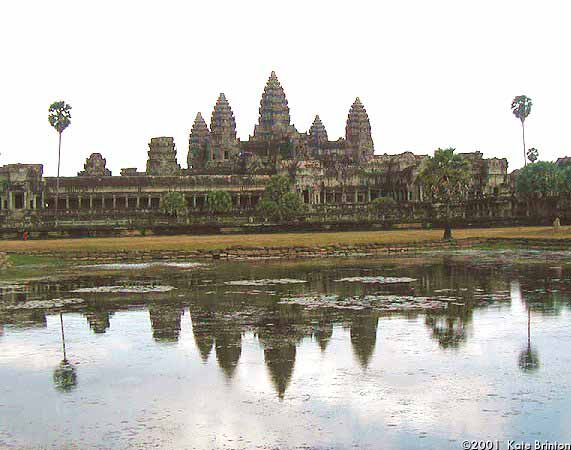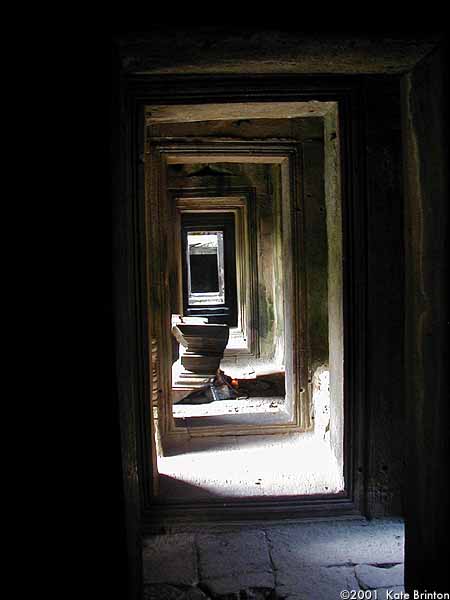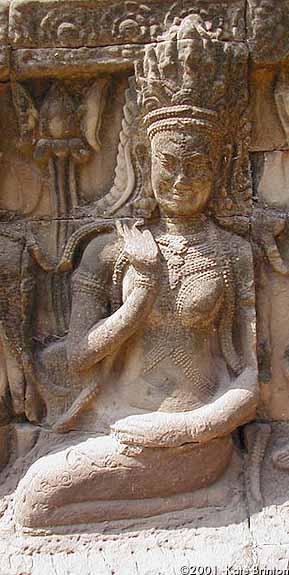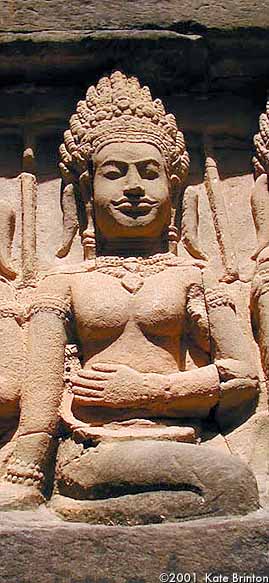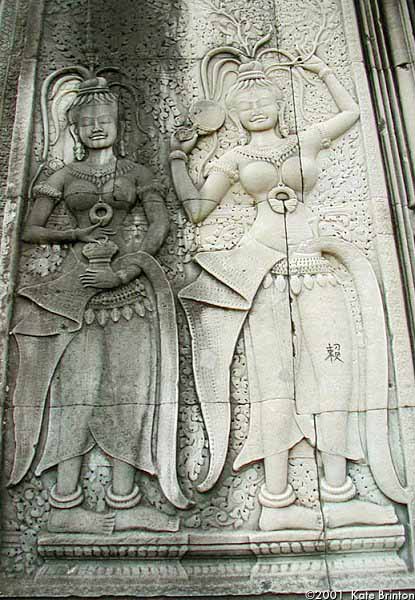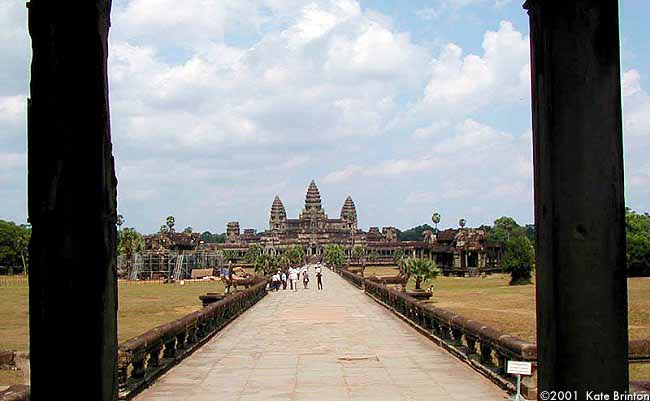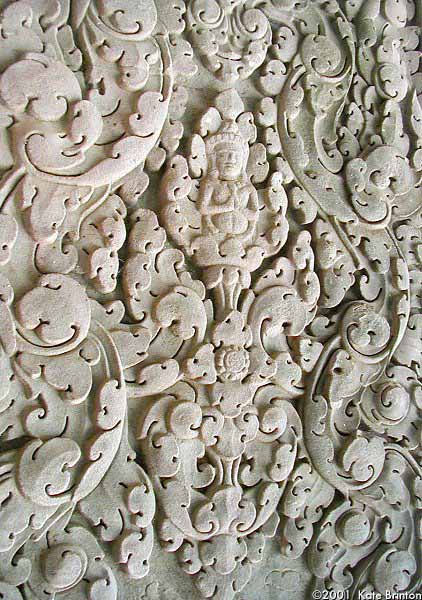[ Cambodia ~ 1 ]
An Afternoon at Angkor Wat
Angkor was the capital of the Khmer empire for about 500 years, peaking in the 12th and 13th centuries. During these busy years, hundreds of monuments, temples, palaces, and administrative buildings were built in the vicinity of what is now Siem Reap, Cambodia.Today, the temples (some Buddhist, some Hindu) are all that remain because it was believed that only gods were worthy of living within stone walls. The other buildings, of lesser materials, are long gone. In their place grows a lush jungle, which stops suddenly and strangely and becomes a barren plain, on which Siem Reap, the nearest town, is situated.
In the dry season, Siem Reap has the feel of a town in the Wild West: hot air; wide, dusty streets; low buildings; and lots of livestock. It claims to be a charming colonial town, but the best I can say is that it provided all the necessary services. We scheduled a car and driver for the day after we arrived, and steeled ourselves for a hard day. Cambodia was hotter than anywhere else we'd been, and we were planning to spend a whole day tramping around in the sun.
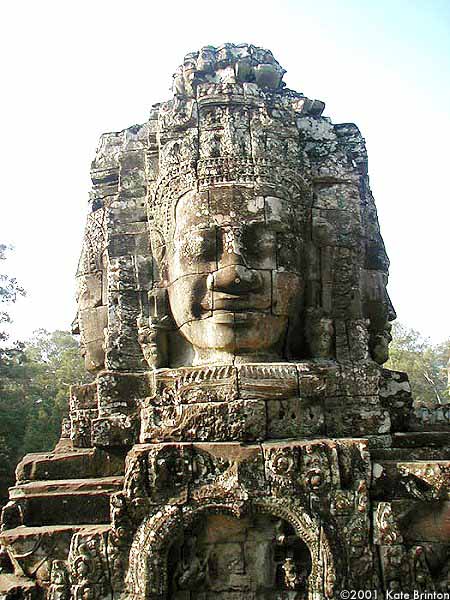
It was also our first glimpse of the amazing carving abilities of the Khmer builders. Every temple we saw that day was covered with small carvings of people and patterns and animals and all sorts of things. The carving was ornate and detailed and delightful to look at.
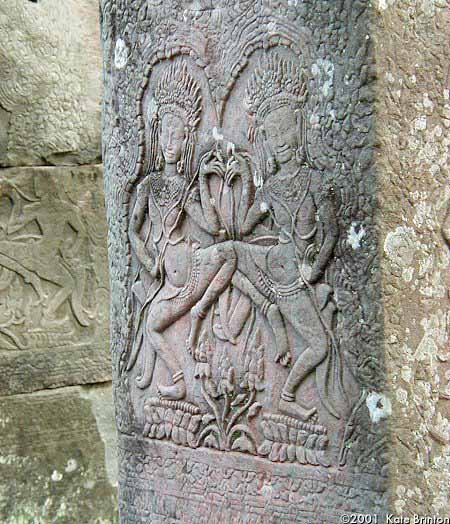
A carving of apsaras (dancing girls)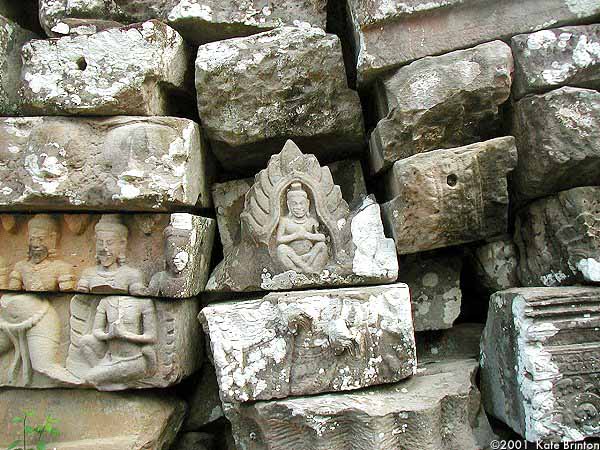
Even the rubble was interesting
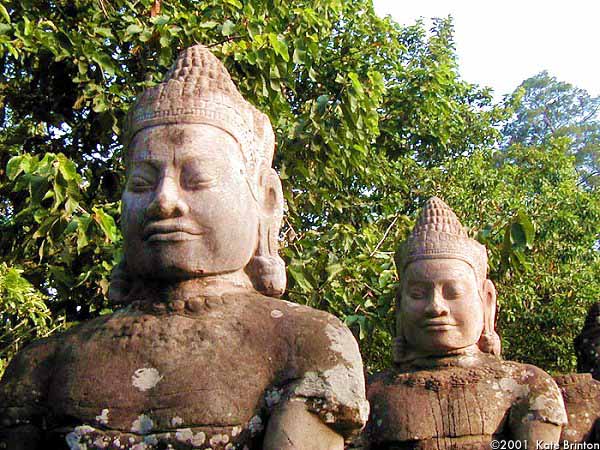
Gods guarding a bridge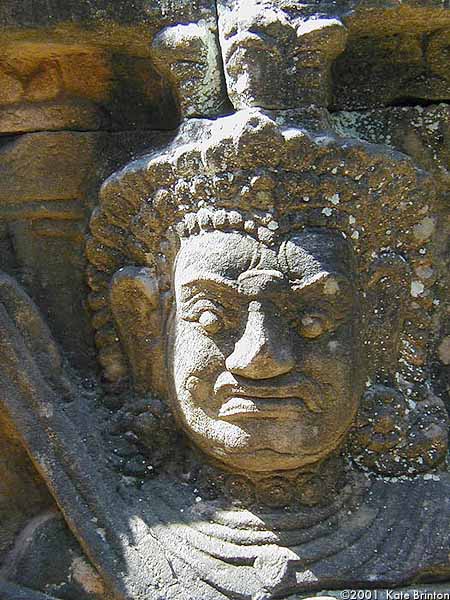
A demon statue
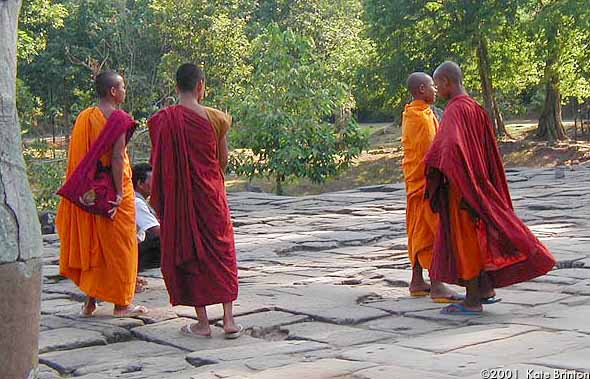
Some tourists were monksBefore lunch, we drove to another area and explored a few other temples before we came to my favorite (except for Angkor Wat itself): Ta Prohm. It was exceptional because, unlike most other temples, no restoration work had been done except for clearing some pathways. So it felt like we were the first people to discover Ta Prohm in the middle of the jungle. Here, mighty trees had grown around and on top of the stone walls of the temple, creating a beautiful synthesis of human effort and nature's power.
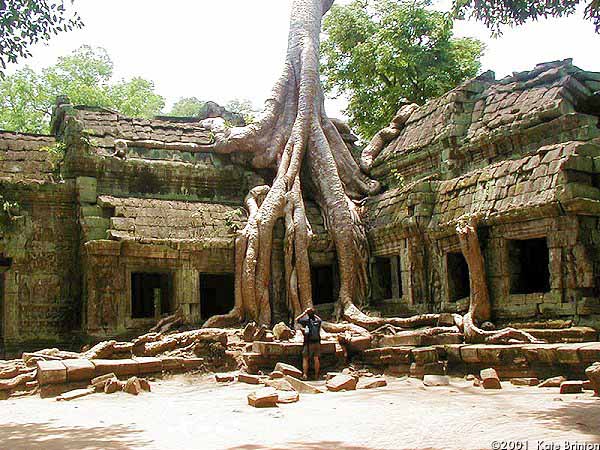
Find Steve in this picture |
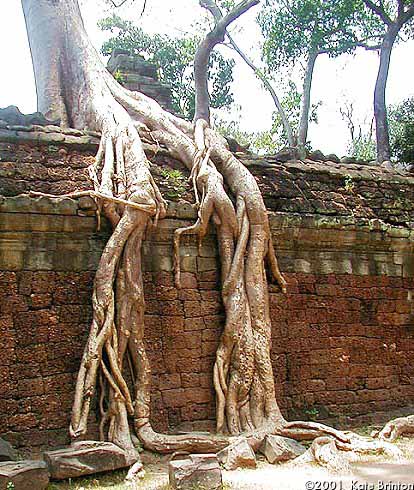
Trees and bricks were intertwined |
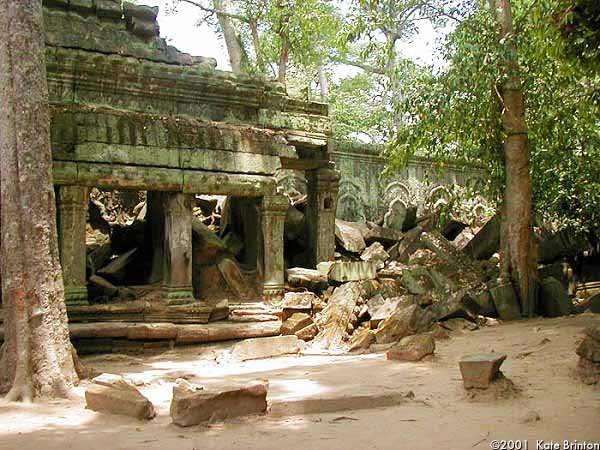
There was a lot of rubble |
Our driver took us back to Siem Reap for a much-needed lunch and air-conditioning break before we set out for the highlight of the day: Angkor Wat. It is the biggest and most magnificent of the temples, and really it is in a class of its own. It is impossible to compare it directly to the other temples we visited. Instead, I'll describe as best I can the experience of visiting Angkor Wat...As we drove around Angkor Wat to the entrance, I could only see a wall and a very large moat, which surrounds the whole temple. When I stood at the edge of the moat, what I saw ahead of me, across the moat, was a huge gopura, or gate. It is so big and imposing that it is on a par with some of the area's temples. Barely peeking out from behind the gopura, I could see the some of the famous shapes of the Angkor Wat towers. From here, they are small and hazy because they are so far away, and seem insubstantial in comparison to the gopura.
Along the walkway, our attention was occasionally drawn to the carvings adorning the sides or small buildings nearby. Each time we glanced back at the temple, it had grown in size until finally we were standing below its immensity.

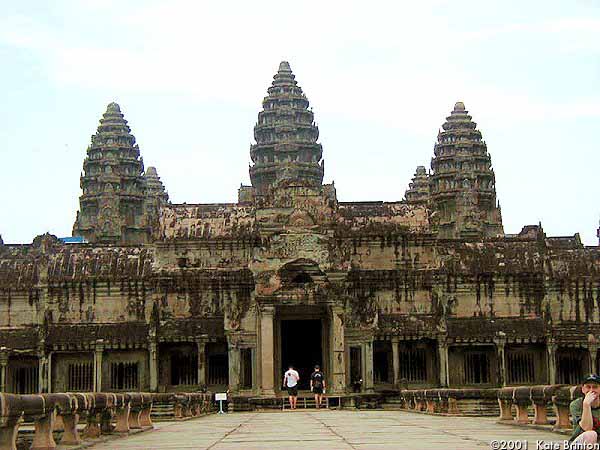
At this point, after the slow build-up, we were both eager to get to the top. We climbed a typically small, precarious, and steep staircase to a courtyard from where the five main towers rose. From here, the temple complex looked smaller than before, and shorter. This is because we had already climbed some of the height and each higher level was smaller in area than the one below. The main towers were right in front of us - we headed for the stairs.

After another stair-climbing experience that was more like climbing a ladder, we could see over the outer walls and enjoy a view of the lush jungle. We walked around the outside of this level and enjoyed the views from all sides. The five main towers of Angkor Wat are arranged in a quincunx (like spots on dice), with four in a square and one more in the middle. We were most of the way up the four outer towers, and walked around peering out windows and probably ruining the photos of those still on the ground. This level was pretty small - a square with maybe 50 feet on a side.
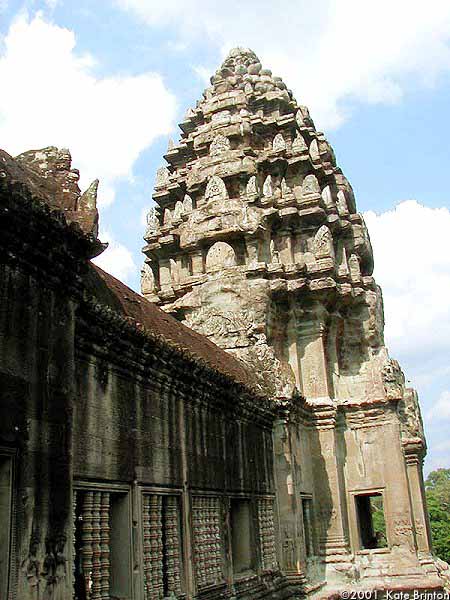
We were eager to climb into the highest tower in the center, and approached it. At the base of the tower was a little chamber containing a Buddha statue and some burning incense. We walked around to another side, only to find the same thing. All four sides of the tower, as we discovered, presented only four alcoves containing Buddhist statues and a few praying monks. No staircase was to be found. In the end, the final secrets of Angkor Wat remained unknown.
After we had relaxed for a while, we headed down all the stairs to the lower level, where the galleries of bas-relief carvings were. These galleries lined the outside of the main temple, and were mind-bogglingly long compared to the upstairs halls. We dutifully walked around the entire circumference, taking in the intricate carvings of scenes from Hindu epics and the lives of the Khmer kings. After the small atmosphere of the upper levels, however, I was kind of overwhelmed by the size and complexity of the carvings. They were truly works of art: layers of depth and perspective were expressed despite everything being carved into only a few inches of stone. One particularly interesting wall depicted people being tortured in Hell. There was so much detail to each scene that my eyes ached after a while of trying to take it all in.
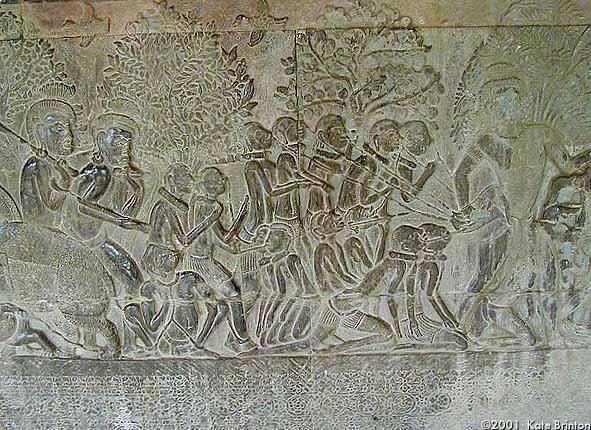
A tiny part of the Hell carvingFinally, the time had come to move on, so we returned down the long walkway, occasionally turning to look as Angkor Wat withdrew into the distance, wrapping itself once again in a hazy shroud. Despite the hordes of tourists brought by the late afternoon photo opportunities, I felt like it had all been between just the temple and I. The windows of the towers seemed to wink at me, reminding me that the mighty temple had allowed me to come within, and had shown me some of its intimate secrets before returning to the mists.
